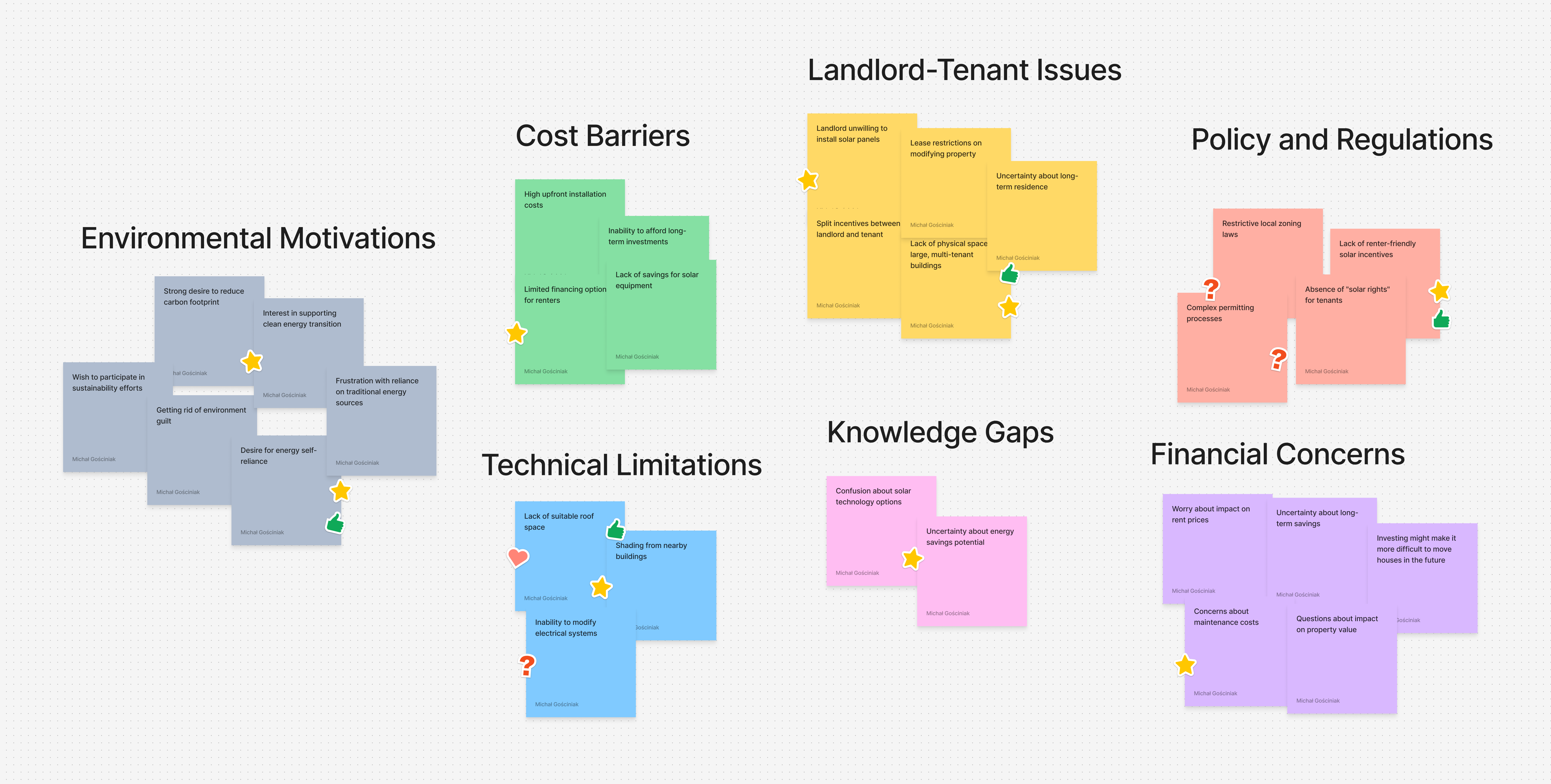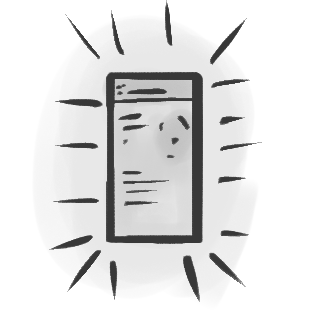SolarCrowd Democratizing Access to Solar Power
Empowering access to solar power in a world where home ownership is becoming a luxury.
Making Solar Power Accessible
SolarCrowd aimed to empower individuals by providing access to solar energy, addressing the growing concern of energy ownership becoming a luxury. The project sought to uncover a new demographic for solar power, focusing on systemic thinking and out-of-the-box solutions.
This project was part of my Google UX Design Professional Certificate coursework.
Empowerment Through Innovation

Systemic thinking
Ecology is at the heart of the project, both in the desire to preserve it and in the systemic thinking that lead to it's creation.

Contextual analysis
Understanding the context, the struggles and the goals of the users was at the heart of this project

Innovative approaches
Breaking away from established solutions enabled new approaches to emerge.
Project Overview
Utilizing the same principles behind crowd-sourcing services like Kickstarter but at a local level enables SolarCrowd to:
- Makes solar power accessible to more people.
- Address the needs of users who want sustainable energy but don't have access to it
- Create a community-driven solution to a shared problem.



SolarCrowd prioritizes the user by:
- Allowing them to participate in green energy initiatives regardless of their financial situation.
- Giving them a sense of ownership in local energy projects.


Uncovering Barriers to Solar Adoption

Informal user interviews
Kicking-off by gathering context through Informal interviews. First, I talked with the main user group (individual clients). Then, I expanded my research to include small and medium-sized businesses and local government representatives.

Usability studies
Improving the design step-by-step based on insights from usability tests. Users tried out the product, and I watched how they interacted with it. This process helped me identify and fix issues, making the design more user-friendly over time.
Research Objective
The research aimed to explore why more people aren't adopting solar power, even when they express interest to do so.

A simple observation led to a big question: Amidst growing demand, how can I make solar energy not just available, but truly accessible for all?
SolarCrowd's response: Break down the barriers of cost and complexity to empower wide-scale adoption of solar energy.
Reasons for wanting to go solar

As demand for solar energy grows, how can we bridge the gap between availability and accessibility, ensuring that everyone can harness the power of solar energy?
Uncovering Barriers to Solar Adoption

No Room for Panels
Many potential users live in apartments or homes with limited roof space, making traditional solar panel installation impossible.

Renter's Dilemma
Renters often hesitate to invest in solar power, fearing they can't take the system with them when they move or that landlords won't allow installation.
The research insights shaped the project focus. It was clear that SolarCrowd needed to:
- Improve access to solar power for people with limited space
- Ensure investments remain valuable even if users relocate
The project aimed to create opportunities for people to invest in solar energy, emphasizing the importance of sustainable solutions. I had to design a system that addressed these key barriers while promoting the adoption of clean energy.


Building a Trustworthy Ecosystem
- Leveraging Local Resources
I tapped into the potential of local governments and small to medium-sized businesses (SMBs) to build a supportive ecosystem for solar adoption. - Creating a Strong Visual Identity
The project needed a trustworthy and energetic visual style to inspire confidence in users. - Simplifying the Application
I designed an easy-to-navigate application process to reduce barriers to entry.
By forming strategic partnerships, SolarCrowd's aim was to create an environment that encourages more people to adopt solar power. This approach addressed the key challenges identified in my research while promoting sustainable energy solutions.
User Archetypes

Individual Clients
Challenges include restrictive housing situations and lack of space, which often prevent eco-conscious individuals from adopting solar energy solutions.

Local Governments
Local administrations struggle to balance budgetary limitations with the desire to promote sustainable community initiatives.

Small to Mid-Sized Businesses (SMBs)
SMBs grapple with integrating sustainable practices into their operations, often constrained by the complexity of information and the need for clear ROI on green investments.
The pyramid of users

Individual Clients: They join the platform seeking accessible solar investment opportunities, contributing to the demand for renewable energy.
Local Governments: They partner with SolarCrowd to meet community sustainability goals, leveraging the platform to fund and manage solar projects.
Small/Mid-Sized Businesses: These businesses invest through SolarCrowd to fulfil corporate social responsibility and benefit from solar incentives.
Paper wireframes
I started the design process with paper wireframes, using this low-fidelity method to quickly explore and iterate on initial concepts.




The ecosystem of SolarCrowd

This diagram illustrates the key connections and interactions between the different user groups within the SolarCrowd ecosystem.
Iterating on the Experience
Based on the insights from the usability studies conducted on low fidelity prototypes the next steps for SolarCrowd were:

Simplified the concept
A majority of the participants from the 'individual clients' user group never heard the term "Crowd-Founding" before and found it confusing. The wording was changed to "Community-founded" in the content.

Redesigned the registration form
Participants had trouble navigating the registration form for investing in a solar farm. To address it we streamlined and better labelled each section of the form.

Reworked visuals for clarity and usability
While the original concepts envisioned a cuting-edge high-tech design, user testing indicated a preference for an interface that feel more familiar. The goal of the rework was to keep the exciting elements of the original design while also creating a feeling of security and trust.

Cleared up misunderstandings in copy
75% of users expected a payment to take place immediately at the end of the form, which wasn't the intention. I clarified that they are simply starting a conversation, not committing to any payment right away. This change helps set the right expectations from the start.

Revamped onboarding process
I redesigned the onboarding process from the ground up. It is now more straightforward and guides users through our platform step by step. This approach ensures that everyone understands how to use it right from the beginning.
.jpg)
.jpg)
%201.png)
%201.png)


Simplifying the application process for easy navigation
I identified the application process as a critical part of the user journey that needed improvement.
- Reduced the cognitive load on users
- Shifted more work to the system
- Streamlined the navigation
The new design guides users through each step more efficiently, asking for information only when necessary. By automating more processes behind the scenes, the application feels less overwhelming and more intuitive for users.





Revamping the Onboarding
I re-designed the onboarding process from scratch, creating a more streamlined and intuitive experience. The new process guides users through the platform step by step, providing clear instructions and setting clear expectations from the beginning. This approach ensures that all users, regardless of their background or experience, can easily get started and make the most of the platform.
Paving the Way for Sustainable Energy
SolarCrowd achieved several key outcomes:
- Identified a new demographic for solar power adoption
- Demonstrated the power of innovative thinking and strategic partnerships
- Simplified the process of accessing renewable energy
- Addressed key user concerns effectively
By tackling these challenges, the project has created a model for future sustainable energy initiatives. SolarCrowd shows that making renewable energy more accessible requires both creative solutions and strong collaborations.
Lessons and future considerations

User expirance lives and dies with complex forms
Complex forms can make or break user experience. In SolarCrowd, the investment inquiry form was both a critical point in the user journey and a major usability challenge. Learning to simplify this complexity was key to the project's success.

An integrated onboarding expirance
User studies revealed confusion about the service, despite the likelihood that real users would be familiar with the offerings. To prevent users from skipping onboarding and missing crucial information, I designed a more integrated experience. This approach ensures all users, regardless of familiarity, get the information they need without disrupting their journey.

Validation in an MVP environment
SolarCrowd's design needs real-world testing to move from concept to pilot. To validate our assumptions, I propose testing the platform in a company environment. Employees could invest in their company's solar farm, providing a controlled setting to assess the design's effectiveness and gather valuable feedback.





